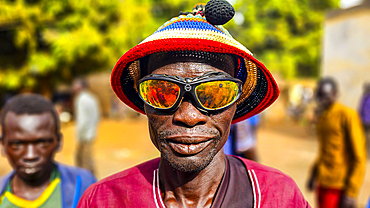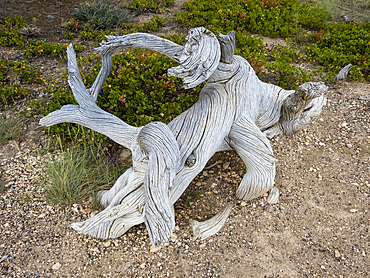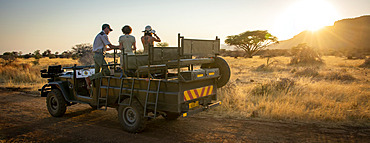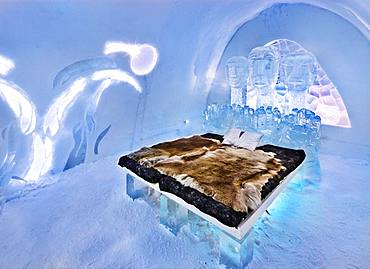Recent searches
Loading...
1384-751 - Interesting geological rock formations at Ajuy, Fuerteventura, Canary Islands, Spain
1184-11398 - Interesting local man in sunglasses, Wau, Western Bahr el Ghazal, South Sudan, Africa
1112-8661 - An interesting piece of wood in Bryce Canyon National Park, Utah, United States of America, North America
832-398220 - Purple lavender field in full bloom, forms interesting structures, Bavaria, Germany, Europe
1116-51936 - View taken from behind of a safari guide and women travelers standing in a parked jeep talking and looking out onto the savanna with binoculars on the Gabus Game Ranch at sunrise; Otavi, Otjozondjupa, Namibia
1178-33224 - Caucasian man with beard standing in remote field
1178-33218 - Caucasian man standing on patio in remote field
1178-32250 - Overhead view of girl playing hopscotch
1350-2117 - Tahiti Tattoo shop in Papeete city. Tahiti, French Polynesia, Papeete's harbour, Tahiti Nui, Society Islands, French Polynesia, South Pacific.
1350-96 - The partial eclipse of the Sun, October 23, 2014, as seen from Jasper, Alberta, in this case shot through thin cloud but that makes for a more interesting photo than one in a clear sky. This is still shot through a mylar filter, on the front of a 66mm f/6 apo refractor using the Canon 60Da for 1/25 sec exposure at ISO 100. The colours are natural, with the mylar filter providing a neutral 'white light' image. With the Sun dimmed a lot by cloud, the longer exposure allowed picking up light and colours in the surrounding clouds.
1350-2118 - Tahiti Tattoo shop in Papeete city. Tahiti, French Polynesia, Papeete's harbour, Tahiti Nui, Society Islands, French Polynesia, South Pacific.
1350-2119 - Tahiti Tattoo shop in Papeete city. Tahiti, French Polynesia, Papeete's harbour, Tahiti Nui, Society Islands, French Polynesia, South Pacific.
1167-2262 - Sunset over beautiful calm sea, interesting clouds, vibrant colours, St. Kitts, St. Kitts and Nevis, Leeward Islands, West Indies, Caribbean, Central America
1167-2263 - Sunset over beautiful calm sea, interesting clouds, vibrant colours, St. Kitts, St. Kitts and Nevis, Leeward Islands, West Indies, Caribbean, Central America
1167-2168 - Ronas Hill from Ness of Hillswick, dramatic cliffs, interesting geology, Northmavine, Mainland, Shetland Isles, Scotland, United Kingdom, Europe
1167-2169 - Ronas Hill from Ness of Hillswick, dramatic cliffs, interesting geology, Northmavine, Mainland, Shetland Isles, Scotland, United Kingdom, Europe
1167-2170 - Ness of Hillswick, interesting geology, jagged cliffs, green hills, sheep, Northmavine, Shetland Isles, Scotland, United Kingdom, Europe
1116-45005 - Large Mountain Lake With Snow-Capped Mountains In The Distance With Clouds Creating An Interesting Light On The Landscape, Argentina
1116-45952 - Interesting Silhouette Design Of Cylindrical Bridge With Sunburst And Trees And Buildings In The Background, Calgary, Alberta, Canada
1116-44826 - The Water And Rock Cliffs Of Blue Mesa Reservoir With Moody Clouds And Interesting Light, Gunnison, Colorado, United States Of America
1116-44281 - A Row Of Pillars At Palais Royal Form An Interesting Pattern, Paris, France
1116-44282 - A Row Of Pillars At Palais Royal Form An Interesting Pattern, Paris, France
1116-43231 - Louisiana, New Orleans, Detail Of An Apartment Address On A Concrete Staircase.
1295-106 - With interesting wispy clouds, the sun sets across the water from Exmouth, Devon, England, United Kingdom, Europe
1295-103 - Really strong afterglow and interesting wispy clouds, reflected in the sea at Exmouth, Devon, England, United Kingdom, Europe
1295-104 - Really strong afterglow and interesting wispy clouds, reflected in the sea at Exmouth, Devon, England, United Kingdom, Europe
1295-95 - Looking North up the Exe estuary with interesting clouds and reflections from Exmouth, Devon, England, United Kingdom, Europe
1112-3904 - Interesting volcanic rock formations surrounding the town of Hanavave, Fatu Hiva, Marquesas, French Polynesia, South Pacific, Pacific
1112-3857 - Interesting rock formations on the island of Vanua Balavu, Northern Lau Group, Republic of Fiji, South Pacific Islands, Pacific
1167-1800 - Blue iceberg at sunset, with interesting cloud formations, Gerlache Strait, Antarctic Peninsula, Antarctica, Polar Regions
1184-1552 - Interesting rock formation in Twyfelfontein, Namibia, Africa
1167-1243 - Old citadel and cliffs, interesting rock formations, Bonifacio, Corsica, France, Mediterranean, Europe
1116-39056 - Agriculture - Aerial view of farmsteads surrounded by rolling contoured agricultural fields / near Reading, Pennsylvania, USA.
1178-21738 - Girl looking through magnifying glass, Utah, United States
832-375103 - A relaxing senior citizen sitting in the garden reading a newspaper
832-375965 - Interesting tuff rock formations, Mono Lake, Lee Vining, California, USA
832-310842 - Stuttgart, DEU, 08.06.2005: The new art museum at the Stuttgart Palace Square. At day a simple glass cube, the building unveils its architectonially interesting inner life at night.
832-310841 - Stuttgart, DEU, 08.06.2005: The new art museum at the Stuttgart Palace Square. At day a simple glass cube, the building unveils its architectonially interesting inner life at night.
832-309832 - Westerheversand Lighthouse with interesting cloud formations, Westerhever, Eiderstedt Peninsula, Schleswig-Holstein, Germany, Europe
832-309831 - Westerheversand Lighthouse with interesting cloud formations, Westerhever, Eiderstedt Peninsula, Schleswig-Holstein, Germany, Europe
1112-1341 - Interesting cloud formations over White Island, North Island, New Zealand, Pacific
832-169545 - Interesting sign combination, Gun Club, cemetery, Mt Newman, Northwest Australia
832-128319 - Panoramic view of the Siegessaeule, Victory Column, towards east with the government district, the Reichstag building, Brandenburg Gate, TV Tower, skyscrapers in Potsdamer Platz, Potsdam Square, Mitte district, Berlin, Germany, Europe
1116-30793 - Japan, Tokyo, Asakusa, Senso-ji Temple, Buddha statue.
1116-28483 - South East Asia, Cambodia, Siem Reap, Bhuddest Temple, Videographer shows video footage to three young monks.
1116-30759 - Japan, Tokyo, Roppongi Hills, upward view of Mori Tower framed by glass and stone of lower structures.
1116-36900 - Hawaii, Maui, Olowalu, Closeup of driftwood in the afternoon light.
1116-28478 - South East Asia, Laos, Luang Prabang, A young monk laughs as he takes his own picture with a visitor's camera.
1116-27758 - Hawaii, Oahu, Fashion model poses among flowers and leaf.
1116-30761 - Japan, Tokyo, Roppongi Hills, upward view of Mori Tower.
1116-28477 - South East Asia, Laos, Luang Prabang, Three young monks sudy in the temple garden.
857-70947 - Tufa formations, towering remnants created by the upwelling of mineral deposits that formed underwater, make for an interesting and otherworldly scene at twilight along the shore of California's Mono Lake.
857-63904 - Kevin Jorgeson climbing "Fantasia" at Lover's Leap, a popular granite climbing destination near Lake Tahoe in California's Sierra Nevada mountains. The cliff is known for its distinct horizontal quartz dikes which make interesting climbing. This route is considered a risky mental test piece because of its lack of good cracks for protection. It was first climbed in 1973 by Royal Robbins and Ken Wilson.
1194-4 - SYRIA Maalula, the last remaining village in Syria where Aramaic is still spoken. This is not part of Wadi al-Nasarah, being a 150 kilometers to the south, but is nevertheless interesting as the majority of the population are Christians, who enjoy the Convent and shrine of saint Tecla being in their midst
912-12 - Heart. Nature, Moldova, summer, Green, macro, Heart, flower, red, plant
1061-5 - 1000s of white dolls hung grotesquely on a canon ball tree for fertility, in the Janardhana swamy Hindu temple in Varkala,Kerala, India. more info: We need to question our need to reproduce more and more of us. As over population is the root of most of our problems.
1036-84 - Killer whale (Orcinus orca): this is a male but the dorsal fin has flopped over. This is probably genetic and not thought to be a big problem. Olafsvik, Iceland.
1036-85 - Killer whale (Orcinus orca): this is a male but the dorsal fin has flopped over. This is probably genetic and not thought to be a big problem. Olafsvik, Iceland.
917-407 - Flying Squid Species in mid-air (Ommastrephes bartramii). Extremely rare unusual image. South Atlantic Ocean. MORE INFO: Flying Squid use membranes between their tentacles (visible on pic) & two fins at the rear of the mantle to glide through the air in a similar way to flying fish. These unique adaptations allow them to avoid predation more easily. Ommastrephid squids are among the strongest swimmers in the Cephalopoda. A number of species are fished commercially. This particular species (Ommastrephes bartramii), is commonly known as "Neon Flying Squid" due to its colouration and its ability to glide over the ocean surface as seen in the photographs. Please note that this is a genuine image of a wild animal in its natural environment. It is not a digital manipulation.
915-234 - Competitor in the Annual World Bog Snorkelling Championships
917-348 - Flying Fish Species (scientific name unknown) rare unusual image, in mid-air. South Atlantic Ocean.
915-236 - Competitor in the Annual World Bog Snorkelling Championships
921-919 - Chinese Temple, Decorative dragon wall carving. Kuching, Sararwak, Malaysia, Asia
915-237 - Competitor in the Annual World Bog Snorkelling Championships
917-406 - Flying Squid Species in mid-air (Ommastrephes bartramii). Extremely rare unusual image. South Atlantic Ocean. MORE INFO: Flying Squid use membranes between their tentacles (visible on pic) & two fins at the rear of the mantle to glide through the air in a similar way to flying fish. These unique adaptations allow them to avoid predation more easily. Ommastrephid squids are among the strongest swimmers in the Cephalopoda. A number of species are fished commercially. This particular species (Ommastrephes bartramii), is commonly known as "Neon Flying Squid" due to its colouration and its ability to glide over the ocean surface as seen in the photographs. Please note that this is a genuine image of a wild animal in its natural environment. It is not a digital manipulation.
915-231 - Competitor in the Annual World Bog Snorkelling Championships
915-232 - Competitor in the Annual World Bog Snorkelling Championships
917-350 - Flying Fish Species (scientific name unknown) rare unusual image, in mid-air. South Atlantic Ocean.
915-238 - Competitor in the Annual World Bog Snorkelling Championships
915-690 - Close-up of head and eye of reef Cornetfish, Smooth flute mouth ( Fistularia commersonii ), Mahe, Seychelles, Indian Ocean (rr)
915-864 - Button-like thalli of Thongweed (Himanthalia elongata), St. Brides Haven, Pembrokeshire, Wales, UK, Europe
915-230 - Competitor in the Annual World Bog Snorkelling Championships
915-235 - Competitor in the Annual World Bog Snorkelling Championships
917-405 - Flying Squid Species in mid-air (Ommastrephes bartramii). Extremely rare unusual image. South Atlantic Ocean. MORE INFO: Flying Squid use membranes between their tentacles (visible on pic) & two fins at the rear of the mantle to glide through the air in a similar way to flying fish. These unique adaptations allow them to avoid predation more easily. Ommastrephid squids are among the strongest swimmers in the Cephalopoda. A number of species are fished commercially. This particular species (Ommastrephes bartramii), is commonly known as "Neon Flying Squid" due to its colouration and its ability to glide over the ocean surface as seen in the photographs. Please note that this is a genuine image of a wild animal in its natural environment. It is not a digital manipulation.
915-233 - Competitor in the Annual World Bog Snorkelling Championships



































































































